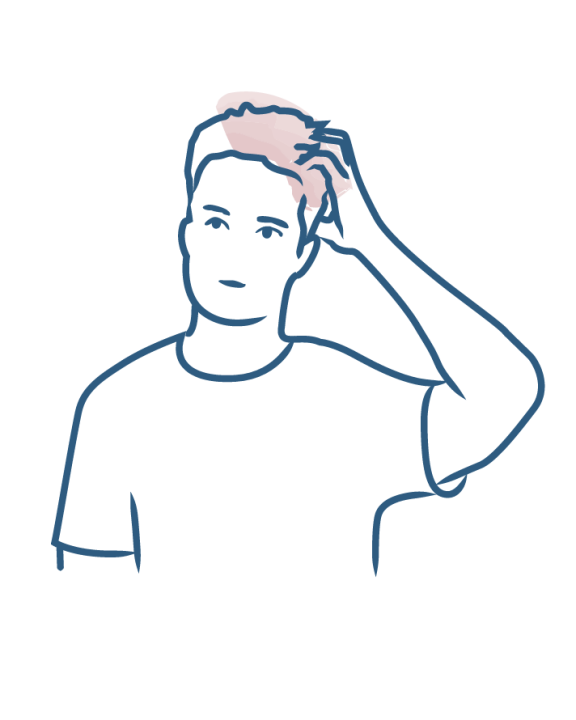Causes of itching: why do we scratch?

Causes of itching: why do we scratch?
Pruritus is the unpleasant sensation which causes the sufferer to scratch. Anyone can feel the urge to scratch for a few minutes at a time and for a variety of reasons, but many people suffer from chronic pruritus, that is, itching that lasts for more than six weeks, and sometimes for much longer. Pruritus and associated itching degrade the quality of life of those affected and those around them. Many questions accompany pruritus, especially regarding its origins. In short, why am I itchy? In this article, we will review the causes of pruritus.
What causes pruritus?
Pruritus is a very common sensation but the mechanisms of its appearance are extremely complex and still largely unknown. The mechanisms involved depend on the cause of the pruritus and involve both cutaneous nerve fibers and various chemical mediators such as cytokines or neurotransmitters.
Whatever the cause of pruritus, it leads to itching and scratching, which in turn promote itching and scratching. It is a vicious cycle of pruritus-scratching-pruritus from which it is often difficult to escape.
Why does my body itch?
The causes of pruritus are very diverse and often of non-dermatological origin. In other words, the causes of pruritus are not necessarily visible, which makes diagnosis and management difficult.
Why do we scratch? Brief overview:
Dermatological pruritus
In the case of dermatological pruritus, a skin condition is the cause of the pruritus. Visible skin lesions are the cause of the itching. In this category, there are of course the major chronic inflammatory dermatoses such as eczema, lesser-known diseases such as bullous pemphigoid in the elderly, but also skin allergies and pruritic infectious dermatoses such as scabies. Other more specific skin problems can be the cause of pruritus and itching, such as sunburn.
Pruritus sine materia
Behind this term, there are many causes of pruritus, very different from each other, but having a non-dermatological origin and the absence of skin lesions in common. However, lesions may eventually appear as a result of scratching. Pruritus sine materia can be divided into several categories depending on the cause of the pruritus. Thus, pruritus sine materia includes all types of pruritus of systemic origin (due to a disease of the liver, kidneys, thyroid, an infection, a certain medication, pregnancy, etc.), those of psychogenic origin (of psychological origin) and those of neurological origin (due to an attack of the central or peripheral nervous system, or to a nervous compression).
Senile pruritus
Senile pruritus refers to pruritus that specifically affects the elderly. The exact cause of this type of pruritus is not clearly known, but it is known to have a major impact on quality of life.
Pruritus gravidarum
Itching during pregnancy is very common. They are generally benign, due to changes in the skin, drier, more sensitive and more stretched in certain areas. However, beware of obstetric cholestasis, a liver disorder that causes itching at the end of pregnancy, abnormal lab results and sometimes a yellow coloring of the skin (jaundice). Obstetric cholestasis requires a particular medical treatment to avoid possible maternal-fetal complications.
Aquagenic pruritus
Here, it is simply water that causes of pruritus. Patients feel pruritus, but also tingling, burning sensations or even pain, a few minutes after contact with water: shower, bath, water sports, rain, sweat... This is called aquagenic pruritus.
Drug-induced pruritus
Medication is one of the main causes of pruritus, yet patients and healthcare professionals do not always think about this side effect. Some molecules put the patient more at risk than others, and some are very commonly used, such as antibiotics or analgesics. Please note that it is the doctor who decides to stop a particular medication. In general, and in the case of iatrogenic pruritus, do not stop or modify a treatment yourself.
Sun Allergy
This is a particular form of dermatological pruritus that appears following sun exposure. Benign sun allergies affect mainly young women on the neckline and forearms, while polymorphous light eruptions (PLE) affect both men and women, at any age, in these cases on the face.
The causes of pruritus are very diverse and sometimes difficult to identify. A medical consultation usually allows for a clearer understanding of the problem and the adaptation of the treatment.
Our care routines
Itching on the scalp or body


